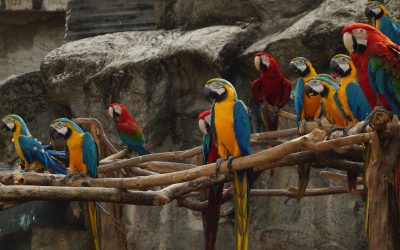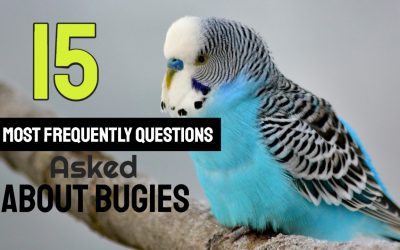Budgerigars are among the most popular pet birds for good reason. These charismatic little parakeets are loveable and affectionate. They are easy to tame if they are acquired at a young age and are able to mimic speech like larger parrots. Budgies are easy to care for and are considered excellent “starter birds” by most aviculturists.
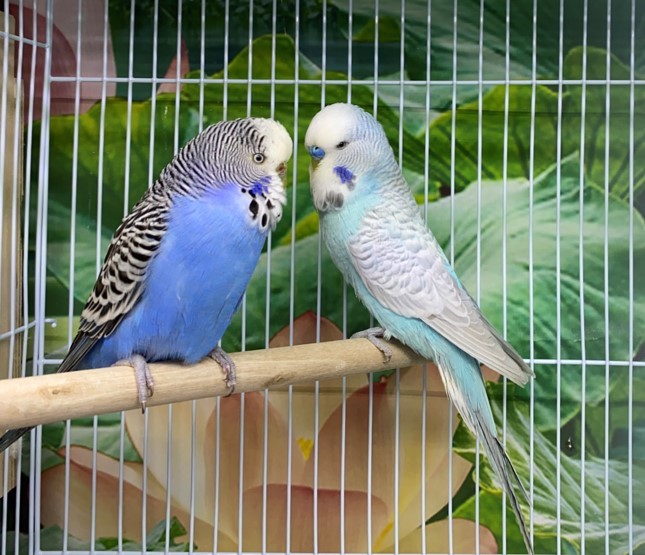
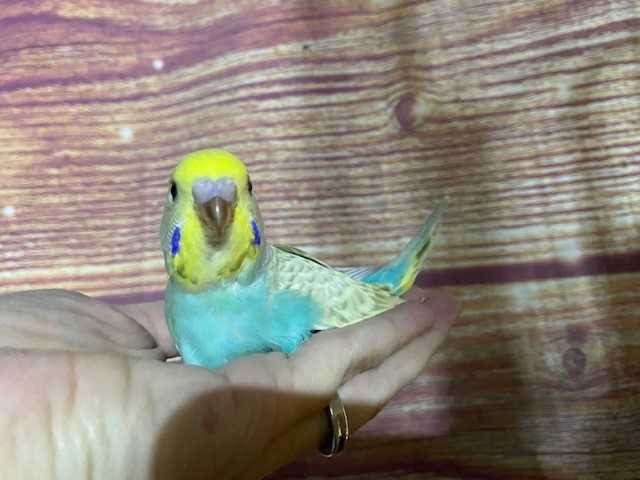

The origin of the budgerigar’s name is unclear. First recorded in 1805, budgerigars are popular pets around the world due to their small size, low cost, and ability to mimic human speech. They are likely the third most popular pet in the world, after the domesticated dog and cat.Budgies are nomadic flock parakeets that have been bred in captivity since the 19th century. In both captivity and the wild, budgerigars breed opportunistically and in pairs.
Biological Facts Budgerigars:
- Budgerigar (Melopsittacus undulatus) – commonly called “budgie”, “shell parakeet”, or just “parakeet”.
- Budgies are only one of a large number of parakeet species.
- Two varieties
- American: smaller body, sleeker plumage
- English: larger body, fluffier plumage
- Weight: 30-34 gm
- Young birds have bands on the forehead that fade by 3-4 months
- Adult males have a blue cere (skin surrounding the nostrils); females have pink cere. This rule applies to the natural color varieties, but not to all of the various color mutations
- Sexual maturity: 6 months
- Avg. life span: 6 years
- Maximum recorded life span: 18+years
- Origins: Australia
Behavior of Budgerigar:
- Very playful and active; can be vocal, but quieter than most parrots
- Budgies can be kept singly if the owner is able to spend a lot of time interacting and bonding with the bird.
- A pair of budgies will keep each other company, but these birds will usually be less tame and not mimic speech as well.
- Hand-fed babies and those that have been handled often will be the easiest to hand tame as they mature.
- Expose early to daily activities in the household. Place cage in area of the home where the family spends the most time.
- Provide environmental enrichment to reduce boredom. Budgerigars are intelligent and curious. They are easily amused with simple toys and love to explore their surroundings
- Budgies should not be allowed unrestricted access in the home where they can encounter numerous dangers. They should be confined to the cage when not directly supervised and should be housed in a “bird friendly” safe room.
Budgerigar Diet:
- Parakeets should not be fed a diet of seed alone. Seeds are nutritionally imbalanced and high in fat, and parakeets that become accustomed to seeds are very hard to switch to a better diet later on.
- Offer your parakeet a wide variety of fresh foods early on: vegetables, leafy greens, fruits, pasta, rice, beans, sprouted seeds. These items should make up about 20-25% of the diet.
- The best option is a pelleted diet specifically formulated for small parrots. Pelleted diets are nutritionally complete and will prevent your bird from picking out only those things he or she likes. Pellets should make up about 75% of the diet.
- Treats, including seeds, should make up only about 5% of the diet
- Clean, fresh water should be provided daily
Best Environment for Budgerigar:
- Cage should be as large as possible, with the bird able to fully extend the wings and flap without touching the sides of the enclosure.
- Cage should be clean, secure, safe, and constructed of durable, non-toxic materials, with varied perches, including concrete perches to keep nails worn.
- Spacing of cage bars should be ½ in (1.27 cm) or less; horizontal bars provide the best opportunity for climbing.
- Avoid placing perches directly over food or water to prevent contamination
- Access to natural light is preferred but avoid drafty areas.
- Birds outside of cages need constant supervision to avoid access to other pets, small children, hot stoves, sinks/tubs full of water, and household toxins.
Preventive Care for Budgerigar:
- Complete physical examination every 6-12 months
- Consult a veterinarian with experience in avian medicine if you have any questions or concerns about your bird’s health
- Annual fecal examination for parasites, yeast, and bacteria
- Blood work annually, or as recommended
- Wing or nail trimming as needed
Common Medical Disorders in Budgerigar:
- Tumors
- Obesity
- Chronic egg-laying
- Eggbinding
- Internal and external parasites
- Overgrowth of beak and nails
- If you’ve ever marveled at a small, colorful, talkative pet bird, chances are it’s a budgerigar. Budgerigars, also known as parakeets or “budgies,” are the most popular type of caged parakeet. They tend to be very friendly, talkative birds, said Dr. Alicia McLaughlin, DVM, associate veterinarian at theCenter for Bird and Exotic Animal Medicine in Bothell, WA. Unsure of what’s involved in caring for a budgie and how you can help it seamlessly make its way into your family? Here, find out what you need to know about caring for a budgerigar and other considerations to keep in mind if one is in your future.
Don’t forget to check out our Youtube Channel or More Budgie and other beautiful videos

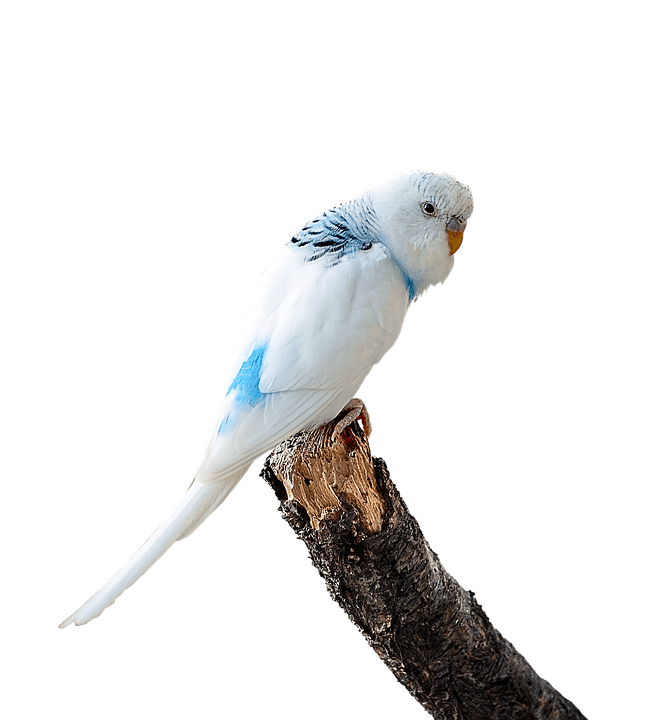
History of the Budgerigar
- Parakeets comprise about 115 species of birds that are seed-eating parrots of small size, slender build, and long, tapering tails, according toEncyclopedia Britannica. Budgerigars are a type of parakeet and, in addition to being called “budgies,” they are often referred to as “shell parakeets” due to the wavy, shell-like formations on their wings.
- Budgerigars are about seven and a half inches long and come in hundreds of brilliant shades of greens and yellows. Generally, parakeets — budgies included — are found in warm regions, from India to Australia and tropical America, and prefer temperatures in the upper 70s to low 80 degrees Fahrenheit (particularly in areas of Australia, where they form large flocks in Australia’s grasslands). These birds congregate together for nesting — forming a breeding colony — in tree holes, laying six to eight eggs twice a year. They tend to have a shorter lifespan than some other parrot species, generally living between 6 and 12 years, Dr. McLaughlin said.
Where to Buy a Budgerigar
- Unfortunately, some budgies found in pet stores can be the product of bird mills. However, parrot rescues can be found in every state and will have birds available for adoption that have been medically tested and cleared, said Jacqueline Johnson, Parrot Garden Manager atBest Friends Animal Society in Kanab, Utah. According to The Gabriel Foundation, a parrot welfare organization, medical testing often includes microscopic fecal analysis (to ensure a bird is parasite-free) and testing for Chlamydophila psittaci (psittacosis), also known as “parrot fever,” a bacterial illness that may be carried by budgies without any signs of illness and that is transmissible to humans. General blood testing, as well as testing for other illnesses, may also be performed, especially if a veterinarian examining the bird finds any marked abnormalities.
What Do Budgerigars Eat?
- According to Dr.Laurie Hess, DVM, board-certified bird specialist and owner of the Veterinary Center for Birds & Exotics in Bedford Hills, NY, budgies need a varied diet that includes formulated pellets, fresh vegetables, and fruits, with seeds provided as only an occasional treat. Most avian veterinarians recommend that formulated pellets make up about 70 percent of the diet (these are nutritionally balanced and are created using a blend of grains, seeds, vegetables, fruits, vitamins, minerals, and other essential nutrients). The other third of the budgerigar diet may come from fresh or frozen vegetables, fresh or frozen fruits and grains, as well as small amounts of other protein sources such as cooked egg or meat.
- While seed may be a favorite food among budgerigars, an exclusive, seed-only diet is a no-no, McLaughlin said, as seeds are deficient in nearly all vital nutrients. Although you may find products like grit — which is primarily made from ground up minerals and sand — marketed for budgies to help their stomachs grind up seed hulls, Johnson said that while grit is useful for birds like pigeons who swallow seeds whole, budgies hull their seeds before eating and don’t need to be given grit.
- Most produce and table foods that are healthy for people are also nutritious for birds. Try to feed your budgerigar either fresh or frozen produce, avoiding too much fruit (it’s high in sugar and may lead to obesity), as well as canned foods, as they may contain certain preservatives that may not be safe for your bird, Dr. McLaughlin said. You’ll also want to avoid feeding your budgie avocado, chocolate, alcohol, caffeine, and uncooked dry beans and legumes, as they contain toxins that can be fatal if your bird consumes enough of them.
- Budgerigars can be creatures of habit, and McLaughlin recommended not making any sudden changes in their diet, as some birds may not recognize new items as food and may actually starve themselves. “Bird owners should talk to an avian veterinarian if they are considering a diet change,” she said.
Veterinary Care and Your Budgerigar
- Due to extensive inbreeding in the pet trade, budgies can be prone to certain tumors and cancers, Johnson said. Budgerigars can suffer from a variety of medical problems, including traumatic injuries to limbs or beaks from scuffles with other animals, obesity, liver disease, gastrointestinal parasites, and other infections, according to Dr. McLaughlin, making regular veterinary check-ups with a bird-savvy veterinarian vital. Since birds commonly mask signs of illness for as long as possible, a yearly veterinary exam is important to help detect problems early and to establish a normal baseline for the bird, Dr. McLaughlin said.“I recommend that budgies be examined by an exotic animal or avian veterinarian every six months to help identify and treat any developing disorders early,” she said. Consider annual bloodwork and fecal analysis to screen for underlying health issues.
Caring for Your Budgerigar
- Budgies tend to be tame, respond well to regular, gentle handling, and can be very affectionate, Dr. McLaughlin said.Additionally, they are not as loud as many other parrot species and can develop surprising vocabularies. Depending on the individual bird and the amount of training they receive, budgies are capable of learning dozens or more words in different languages. Even though budgies are known for being quieter parrots, they may still be noisy and are very messy — a trait of virtually all birds. As with any pet, budgerigars require a big commitment, including a lot of attention to socialize them, safe housing, and proper nutrition, Dr. McLaughlin said.
- Budgies are small and may be timid, so if there are other predatory pets in the house, said Dr. Hess, such as cats or dogs that might consider budgies as prey, owners should be careful not to have the birds out of their cages when these other pets are around and should be sure that budgies’ cages are securely locked and not easily within other pets’ reach.
- Hess added that budgies also may not be the right fit for very young children, who may scare these birds with their quick movements and rough handling. However, budgies can make great companions for slightly older, responsible children who are supervised when they handle these pets and who can be taught to allow these birds to sit quietly on their hands.
- Whether or not you allow your budgerigar to fly freely in your home depends on your living situation, said Dr. Hess.While it is nice to enable your pet bird to fly as it does in the wild, in a small captive setting (particularly if there are other pets in the house or if they can be in danger of flying into a window, mirror, or ceiling fan or out an open door) flying may not be practical, and wing clipping – or trimming the five outermost flight feather to prevent lift – may be the more prudent choice.
- Wing clipping is temporary, however, and feathers will grow back in a few months if you decide to let your bird fly. “A caregiver must weigh the benefits of flight against the need for safety and make an informed decision about clipping wings or not,” said Johnson.
- Consult an avian veterinarian before making the decision to trim a bird’s wings, Dr. McLaughlin said. The process of clipping a bird’s wings is not painful and usually needs to be performed every three to six months, she added.
- When purchasing a cage, consider one that is large enough for your bird to fly or hop uninhibited, with narrow bar spacing (larger spacing can lead to budgerigars getting their heads caught in the bars). Since budgies love warmer temperatures, Dr. McLaughlin recommended keeping a ceramic heat lamp to one side of the cage (outside of the cage) if your home is particularly cool in the winter. She also recommends allowing your budgie to have supervised time out in natural sunlight (in a cage for their protection) whenever possible for optimum health.
- According to Dr.Hess, ultraviolet (UV) light is critical to enabling birds to make vitamin D in their skin, which then enables them to absorb calcium from their food. If it’s too cold or impractical to expose your bird to natural sunlight outside, you can provide your budgie with supplemental UV light for several hours each day using a 5.0 UVB light (which emits a five percent UVB output) shining over the cage, Dr. McLaughlin said. Several safe UV lights are commercially available for birds, Hess added, and UV lights made for reptiles should not be used for birds, as the light may cause damage to their eyes or burns.
- When it comes to grooming your budgerigar, Dr. McLaughlin said that they should be allowed to “shower” with water daily (or a minimum of twice per week) for optimal feather and skin health.Budgies typically need toenail trims every other month to keep them short and blunt to prevent them from catching on clothing or curling under and damaging the feet; however, if you provide your bird with a number of different-texture perches, they will often wear their nails down naturally, Dr. Johnson said.
- Budgerigars usually enjoy a wide variety ofbird toys, said Dr. Hess, including shredding toys (made from paper for your parrot to destroy), foot toys (to promote dexterity of the feet), swings, noise makers and foraging toys (puzzle-like toys that hide food for your bird to discover). Materials that are safe for use in parrot toys include wood, leather, paper, and most hard plastic products that are not too soft to chew and ingest. Toys with bells or other metal items should be made only of stainless steel or nickel-plated metal and not zinc or lead, which are potentially toxic to birds
- “Budgies can be incredible companions,” Johnson said.“They are smart, silly, and tend to bond closely to their owners if they are handled consistently. It is important to move slowly at first to establish a trust-based relationship. Once a budgie accepts you, they love to spend time with you.”

Related Articles
Related
Everything you need to now about cockatiel diet
The health and vitality of your Cockatiel depends entirely on the right kind of diet.The perfect diet not only means the right amount but also the right combination ofthe essential nutrients required by your Cockatiel. We need to be even morecareful about the...
13 Fun Facts About Macaws | Bird and Beyond
1. Macaws Can Live More Than 80 YearsMacaws live to be around 60 years in the wild on average, and in some cases this can extend for up to 80 years and even as long as 100 years. When kept as pets, macaws are often known for outliving their owners! In the wild, their...
15 Most Frequently Asked Questions about Budgies
15Frequently Asked Questions.Here are some most common questions about bugies. When people refer to an "English" budgie they are generally talking about a budgie that is significantly bigger than the wild Australian budgerigar and with characteristics and features...


